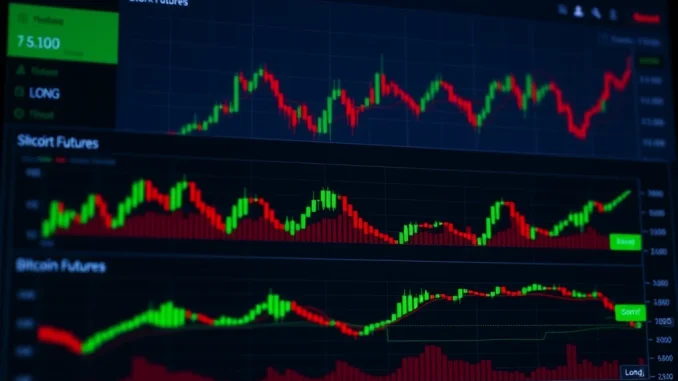
Understanding the pulse of the cryptocurrency market is crucial for any trader or investor. One key metric that offers insight into collective trader positioning is the BTC long-short ratio. This ratio provides a snapshot of how many traders are betting on Bitcoin’s price to rise (long) versus those expecting it to fall (short) on futures markets.
What Does the BTC Long-Short Ratio Tell Us?
The BTC long-short ratio is calculated by dividing the total number of long positions by the total number of short positions on a specific exchange or across multiple exchanges. A ratio above 1 typically indicates more long positions than short, suggesting a potentially bullish sentiment among futures traders. Conversely, a ratio below 1 suggests more short positions, hinting at a bearish sentiment.
These positions are often taken on perpetual futures contracts, which are a type of derivative that allows traders to speculate on the price of Bitcoin without needing to hold the underlying asset. Unlike traditional futures, they don’t have an expiry date, making them popular for continuous trading strategies.
Analyzing the Latest 24-Hour Trading Data
Let’s look at the trading data from the past 24 hours for BTC perpetual futures across major cryptocurrency exchanges. This provides a recent glimpse into short-term market sentiment:
Aggregate Data (Past 24 Hours):
- Total Long Positions: 50.81%
- Total Short Positions: 49.19%
This aggregate data shows a slight lean towards long positions globally over the last day, though the split is very close to 50/50.
Breakdown by Top Exchanges:
Examining individual exchanges can reveal nuances in trader positioning:
| Exchange | Long Positions | Short Positions |
|---|---|---|
| Binance | 51.32% | 48.68% |
| Bybit | 50.76% | 49.24% |
| Gate.io | 50.32% | 49.68% |
Across these top platforms, the pattern of slightly more long positions holds true, with Binance showing the strongest bias towards longs among this group.
Interpreting the Current Crypto Market Sentiment
Based on this 24-hour data, the immediate crypto market sentiment among futures traders appears cautiously optimistic, or perhaps more accurately, slightly biased towards bullishness rather than outright bearishness. A ratio so close to 50/50 doesn’t indicate strong conviction in either direction but suggests a relatively balanced market over this specific period.
Key Considerations:
- Short-Term Snapshot: This data represents only the past 24 hours. Trends over longer periods (e.g., 7 days, 30 days) can provide a different perspective.
- Not a Price Predictor: The long-short ratio is a sentiment indicator, not a direct signal of future price movements. High long positions could sometimes precede a liquidation event if the price moves against them.
- Exchange Variation: While the top exchanges show a similar pattern, data can vary across different platforms due to diverse user bases and trading strategies.
How to Use This Information
Traders often use the BTC long-short ratio as one piece of their analysis puzzle. It’s best used in conjunction with other technical indicators, price action, volume analysis, and fundamental news. A sudden shift in the ratio might be more significant than a steady, near 50/50 split.
For instance, if the ratio suddenly spikes heavily towards longs during a price rally, it might suggest over-leveraging, potentially increasing the risk of a sharp pullback if sentiment changes or large positions are closed.
Conclusion
The latest 24-hour Bitcoin futures data indicates a marginal preference for long positions among traders on major exchanges. While the overall crypto market sentiment reflected by this metric is close to neutral, the slight lean towards longs suggests a prevailing cautious optimism. Remember, this is just one indicator; a comprehensive trading strategy involves analyzing multiple data points to make informed decisions in the dynamic cryptocurrency market.



